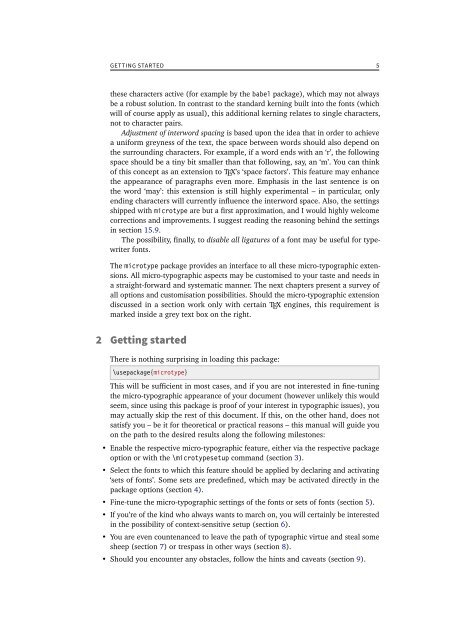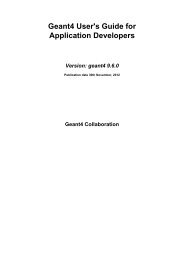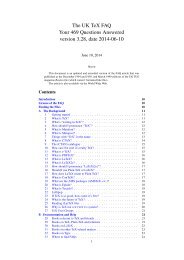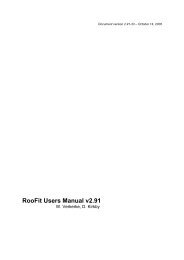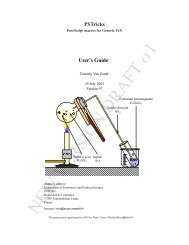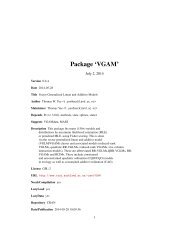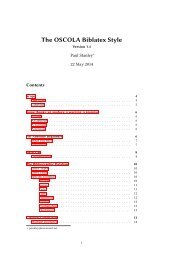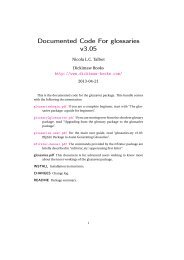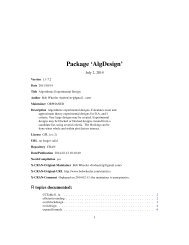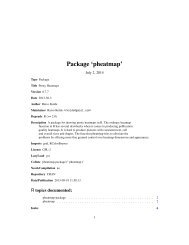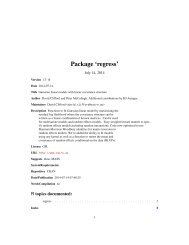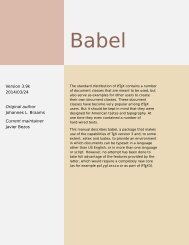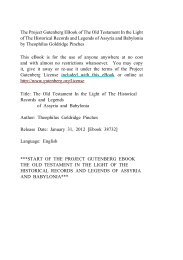The microtype package
The microtype package
The microtype package
You also want an ePaper? Increase the reach of your titles
YUMPU automatically turns print PDFs into web optimized ePapers that Google loves.
GETTING STARTED 5these characters active (for example by the babel <strong>package</strong>), which may not alwaysbe a robust solution. In contrast to the standard kerning built into the fonts (whichwill of course apply as usual), this additional kerning relates to single characters,not to character pairs.Adjustment of interword spacing is based upon the idea that in order to achievea uniform greyness of the text, the space between words should also depend onthe surrounding characters. For example, if a word ends with an ‘r’, the followingspace should be a tiny bit smaller than that following, say, an ‘m’. You can thinkof this concept as an extension to TEX’s ‘space factors’. This feature may enhancethe appearance of paragraphs even more. Emphasis in the last sentence is onthe word ‘may’: this extension is still highly experimental – in particular, onlyending characters will currently influence the interword space. Also, the settingsshipped with <strong>microtype</strong> are but a first approximation, and I would highly welcomecorrections and improvements. I suggest reading the reasoning behind the settingsin section 15.9.<strong>The</strong> possibility, finally, to disable all ligatures of a font may be useful for typewriterfonts.<strong>The</strong> <strong>microtype</strong> <strong>package</strong> provides an interface to all these micro-typographic extensions.All micro-typographic aspects may be customised to your taste and needs ina straight-forward and systematic manner. <strong>The</strong> next chapters present a survey ofall options and customisation possibilities. Should the micro-typographic extensiondiscussed in a section work only with certain TEX engines, this requirement ismarked inside a grey text box on the right.2 Getting started<strong>The</strong>re is nothing surprising in loading this <strong>package</strong>:\use<strong>package</strong>{<strong>microtype</strong>}This will be sufficient in most cases, and if you are not interested in fine-tuningthe micro-typographic appearance of your document (however unlikely this wouldseem, since using this <strong>package</strong> is proof of your interest in typographic issues), youmay actually skip the rest of this document. If this, on the other hand, does notsatisfy you – be it for theoretical or practical reasons – this manual will guide youon the path to the desired results along the following milestones:• Enable the respective micro-typographic feature, either via the respective <strong>package</strong>option or with the \<strong>microtype</strong>setup command (section 3).• Select the fonts to which this feature should be applied by declaring and activating‘sets of fonts’. Some sets are predefined, which may be activated directly in the<strong>package</strong> options (section 4).• Fine-tune the micro-typographic settings of the fonts or sets of fonts (section 5).• If you’re of the kind who always wants to march on, you will certainly be interestedin the possibility of context-sensitive setup (section 6).• You are even countenanced to leave the path of typographic virtue and steal somesheep (section 7) or trespass in other ways (section 8).• Should you encounter any obstacles, follow the hints and caveats (section 9).


